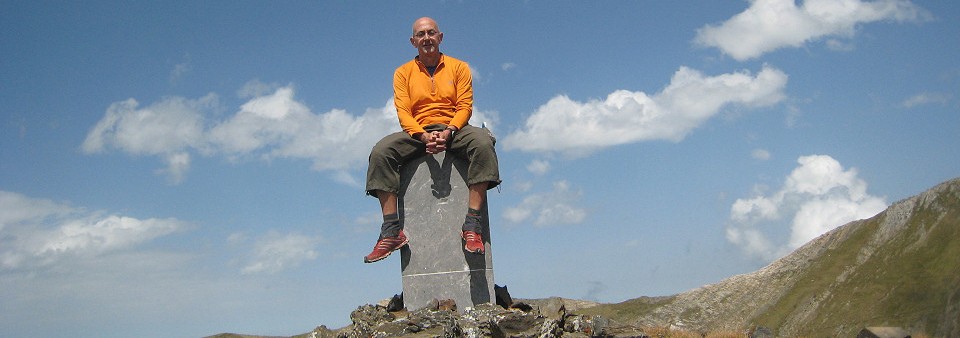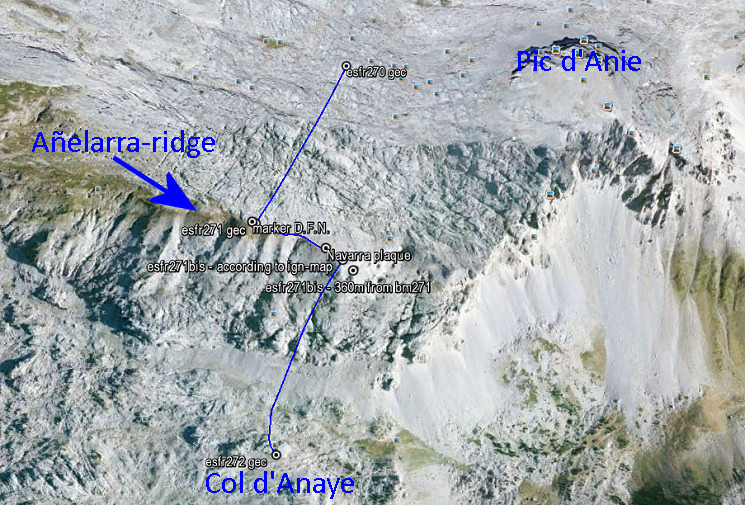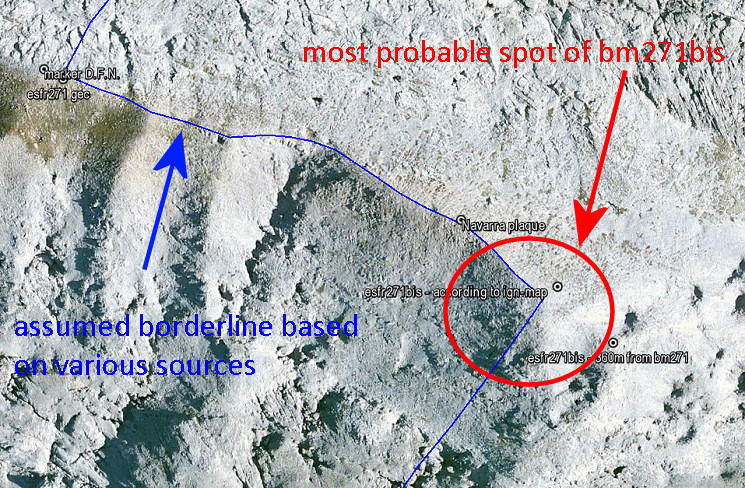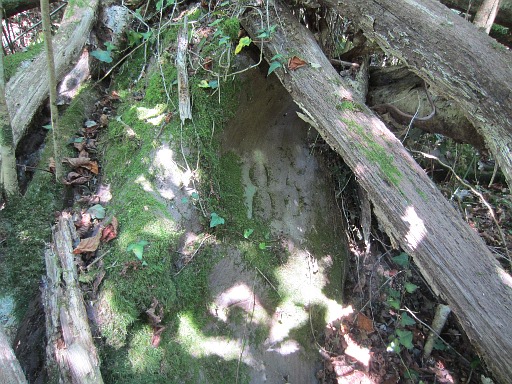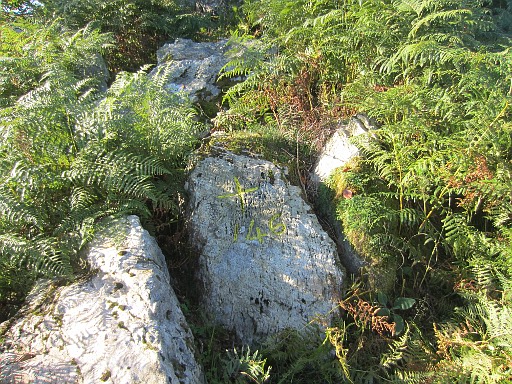On 1-9-2013 I returned to the desolated borderpass of Col d’Anaye. My goal: trying the waymarked trail up the steep hillside towards bm271. See this post about how I heard about it.
Surpringly I found the climb up more difficult than the descent. But in fact it’s not that difficult. It contains some steep and slippery parts but if you take your time and take care, you will manage. There’s enough solid rock to hold on to as support. There’s only one tougher passage through a steep gully with a tricky breach in its middle. See further on.
Let’s first show my route from bm271 to 272 on this overview:
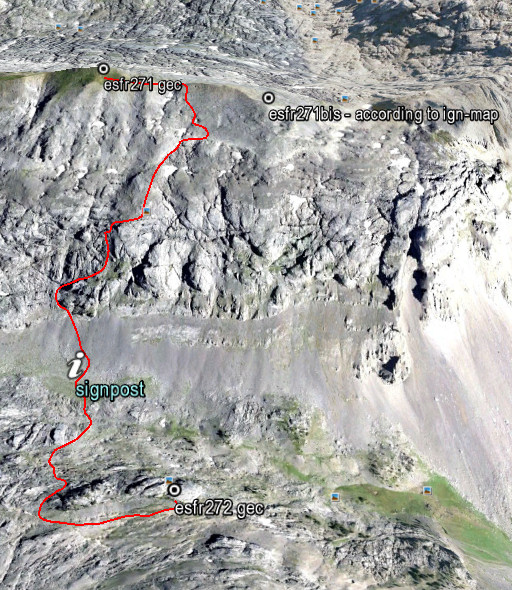
A bit to the N of the signpost, a trail (with cairns) takes you up to the steep rockwall. And then you are guided up the hillside by cairns. Much higher, the cairns disappeared but then the ridge of bm271 and 271bis (with the saddle between them) is already visible. A solitary tree a bit higher is a useful waymark when you descend from the saddle.
The elevation is ± 300m from signpost to bm271 and the climb will take ± 1 hour, same for the descent.
As said before, there’s one steep and slippery gully (a ‘chimney’) which requires more caution. In the middle, there’s a sort of breach to tackle. You shouldn’t be too fat to climb/descend through it. But again: descending through it was easier than I expected when I climbed up.
I propose to call it “la brèche d’Eef”, a modest but everlasting testimony of my dwellings through the Pyrenees. On this picture: the gully with its breach, seen from above
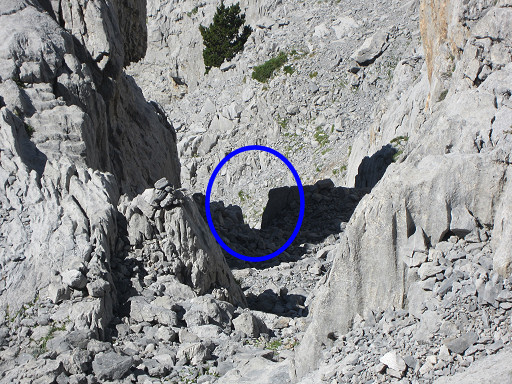
And now my proposed route from bm271 to 272 more in detail with some directions how to descend to the signpost at the foot of hillside. And how to continue to bm272 (a 20 minutes-walk).
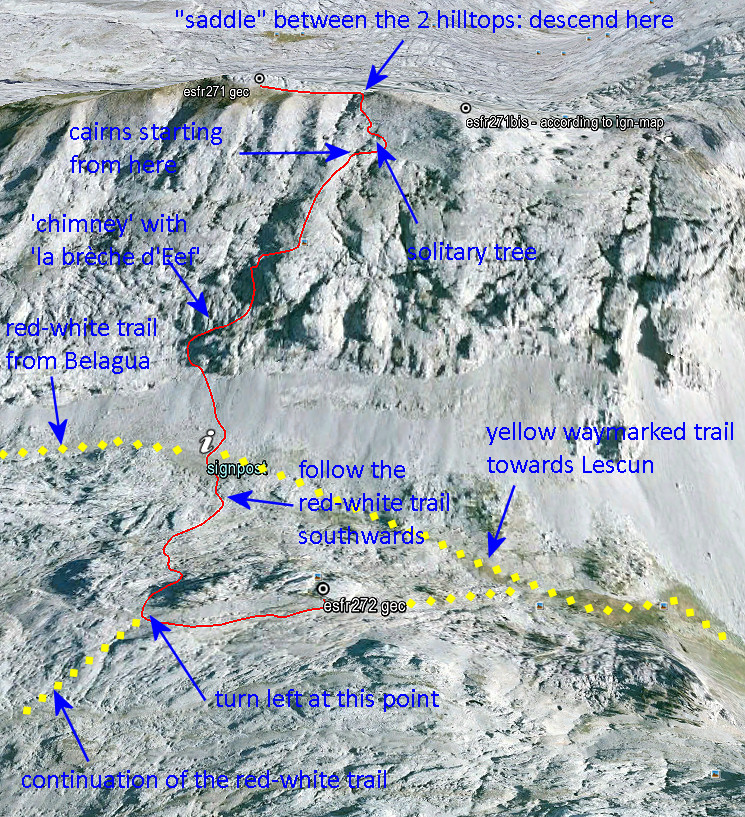
Want to see this shortcut on Google Earth? Click on this file.
